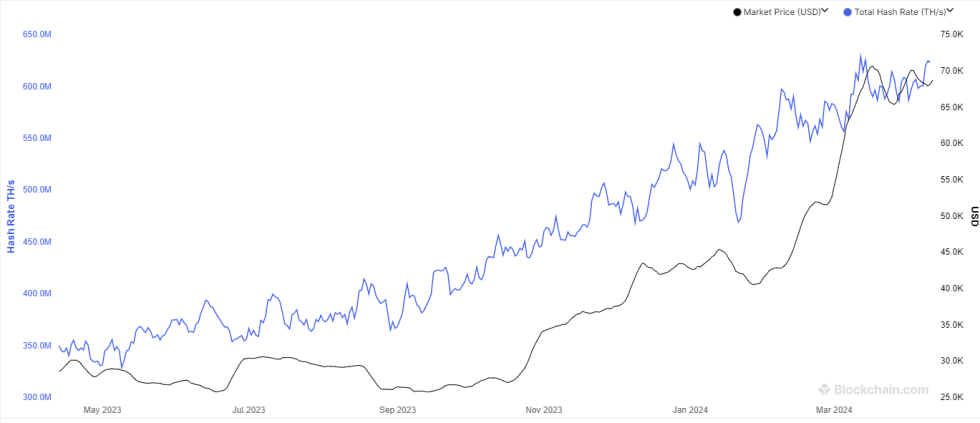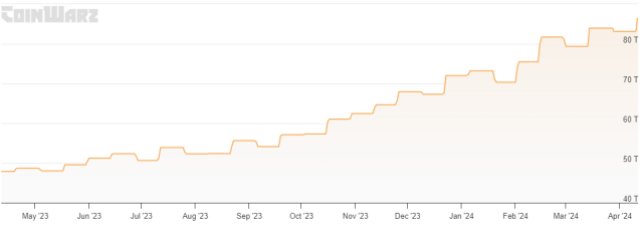The mining difficulty for Bitcoin has increased by 4% lately due to the mining hash rate getting close to reaching new record highs.
Bitcoin 7-Day Mining Hashrate Is Back Near ATH Levels
In simpler terms, the “mining hashrate” represents the collective processing power of all computers engaged in mining Bitcoin. The strength of this figure reflects the Bitcoin network’s security level.
In simpler terms, for malicious users to carry out a successful 51% attack on the network, they must own and manage over half of the active mining rigs connected to it. As the number of miners increases, making up the hashrate, the security becomes more robust, requiring more resources from an attacker to be successful.
In other words, it’s important that the new decentralized power added to the network truly decreases the overall risk, rather than just shifting it to a centralized source. If the hashrate (or computing power) is concentrated in the hands of a few entities, then the network may not experience the same level of risk reduction as if the power were evenly distributed among many participants.
The hashrate offers an insight into the mining industry’s interest in cryptocurrency. An increase indicates that miners find the network appealing, whereas a decrease suggests that some miners believe the chain is no longer profitable, causing them to withdraw.
Here’s a chart displaying the development of Bitcoin’s 7-day average mining hashrate over the last twelve months.

The 7-day average Bitcoin mining hash rate, as shown in the graph above, has seen a recent surge and is now close to reaching its all-time high from mid-March. Miners have chosen to restart expansions of their operations that were previously scaled back.
In addition to indicating the overall processing capability, the hashrate represents the level of miner competition.
In the Bitcoin system, the rewards given to miners for adding new blocks are set at a constant value in Bitcoin (except for during Halving occasions when they get reduced by half). The network strives to add a new block approximately every 10 minutes to keep the reward distribution relatively consistent.
In simpler terms, adding more mining power won’t help miners process blocks any quicker due to the fixed reward system. As a result, an increased hashrate only leads to smaller shares for each miner.
A miner can avoid this issue by raising their hashrate in tandem with the network’s growth. Regrettably, heightened competition ensues when hashrates rise, making it more challenging for individual miners to maintain profitable margins.
To keep this relationship consistent, Bitcoin’s network includes a “difficulty” adjustment. When miners increase their processing power, the time it takes to mine a block initially decreases due to their ability to produce blocks more rapidly using the additional hashrate.
In response, the network raises the problem’s complexity, making it more challenging for miners to find solutions for blocks. Consequently, any potential speed gains are nullified by this increased difficulty.
After a recent rise in hashrate, it’s normal to see an increase in mining difficulty in the most recent adjustment on the blockchain.

BTC Price
At the time of writing, Bitcoin is trading at $69,700, up 3% over the past week.

Read More
- SOL PREDICTION. SOL cryptocurrency
- LUNC PREDICTION. LUNC cryptocurrency
- BTC PREDICTION. BTC cryptocurrency
- USD COP PREDICTION
- TON PREDICTION. TON cryptocurrency
- USD PHP PREDICTION
- USD ZAR PREDICTION
- ENA PREDICTION. ENA cryptocurrency
- Top gainers and losers
- EUR USD PREDICTION
2024-04-12 05:11